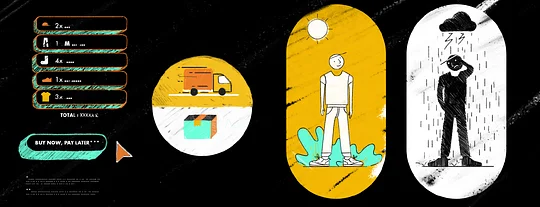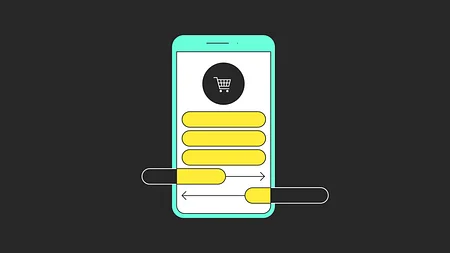What are the risks of Buy Now, Pay Later programmes?

Are consumers experiencing the downside of a booming consumer lending industry?
Ever had your washing machine give out on you with no warning? Or wanted to get that perfect piece of furniture a little bit sooner? If so, you’ve probably mulled over a buy now, pay later plan. And you’re not alone: 57 percent of Gen Xers have used these services, in addition to 40 percent of millennials, according to research Kearney.
So how do these programmes work? Customers purchase an item immediately with no money down and then make payments at a later date, ideally without accruing any interest.
These plans are often provided by third-party companies working in partnership with retailers. The specifics vary based on who’s involved; shops that work with Klarna, one of the industry’s most notable players, can offer their customers the ability to pay in 30 days, in instalments, or through financing agreements.
As user adoption grows, so do worries about the risks [BNPL] arrangements pose for consumers’ credit scores
It would be an understatement to say that BNPL plans have been staggeringly popular; the BBC recently reported that the industry has been growing by nearly 40 percent year-over-year. But as user adoption grows, so do worries about the risks these arrangements pose for consumers’ credit scores.
Earlier this year, a survey from price-checking website Compare the Market found that 22 percent of those surveyed had seen their credit scores fall as a result of BNPL programmes. And as BNPL programmes have become more popular, myriad horror stories of unknown consumer debt continue to grab headlines.
To better understand these concerns, let’s delve into the industry’s major players, the benefits they offer to consumers, the negative impacts it could carry and what’s next for a young sector.
The major players
Of the three big buy now, pay later companies currently operating in the UK, none are actually homegrown. Klarna hails from Sweden, Laybuy from New Zealand and ClearPay from Australia. Each makes money primarily through sales commissions, though they may also charge interest or late fees.
Arriving in 2014, Klarna was the first BNPL brand to launch in the UK. It has since become a dominant player in the space, keeping in close contention with Revolut for the title of Europe’s most valuable fintech and operating with companies like ASOS, Topshop and H&M. Despite posting an annual loss for the first time last year, the company still boasts seven million UK customers and partnerships with over 5,000 merchants.
In contrast to Klarna, Laybuy is a relatively recent entrant to the UK market. Launched here in 2019, the company updates the concept of layaway by allowing customers to split a purchase into six instalments, one of which is paid up front. Unlike Klarna, Laybuy doesn’t charge interest for late payments, although it does have late fees. Its current retail partners include WH Smith and JD Sports.
[BNPL] programmes bring the advantages of brick-and-mortar retail to the online shopping experience
ClearPay is another BNPL company from Down Under that broke into the UK last year, and the similarities to Laybuy don’t end there. Both companies share a late fee model that charges £6 late fees at both 24-hour and seven-day intervals.
But where Laybuy allows customers to repay their purchases in six instalments, ClearPay offers four. The latter counts former PayPal VP Carl-Olav Scheible as CEO, and has also teamed up with an impressive array of partners, including Marks & Spencer, Urban Outfitters and boohoo. While ClearPay’s total customers still pale in comparison to Klarna, the Australian company has still grown substantially. In the past year, it has more than doubled its active customer base to 7.3 million users.
Notably, PayPal also offers a BNPL proposition through its lending product, PayPal Credit. Customers have four months to pay down purchases over £99 without incurring interest charges as long as they keep up with their monthly minimums. Last year, PayPal Credit surpassed 1.5 million accounts and £2 billion in lending.
The benefits
Buy now, pay later schemes have one obvious benefit over credit cards: if customers follow the rules, they can pay back purchases over the course of three months without accruing additional debt.
These programmes also bring the advantages of brick-and-mortar retail to the online shopping experience. Take Klarna, which promotes a “try before you buy” approach to its service. Deferred payments give customers the chance to test out their purchases. If they don’t like what they bought, they can simply return their orders before the first payment is due.
BNPL firms argue that they create a more intuitive approach to shopping, which in turn allows retailers to sell more
Ideally, these customer benefits trickle down to merchant partners. BNPL firms argue that they create a more intuitive approach to shopping, which in turn allows retailers to sell more.
Klarna, for example, says that shoppers spend 55 percent more when they can pay by instalment, and 44 percent of users would back out of a purchase if these features weren’t available. In other words, more customers will give up more of their money. Importantly, retailers don’t assume additional risk – the BNPL firm fronts the money for the buyer and assumes control of the debt.
Which is where these companies become problematic for consumers...
The downsides
The problems with buy now, pay later programmes largely revolve around consumer debt and financial literacy. While customers may have a basic understanding of how these plans work, many are unfamiliar with the consequences of late payments.
That concern is especially relevant in the wake of the Compare the Market survey, which also found that more than 40 percent of BNPL users were unaware missed payments could affect their credit scores. Twenty percent of respondents also reported confusion about their agreements’ terms and conditions, suggesting that the rules need to be clearer.
Customers tend to buy bigger ticket items more often when the bill isn’t due immediately...
Take debt collection, for example. Each of the three major players work with credit agencies to recoup unpaid bills, but as a Vice piece notes, Klarna’s terms and conditions make no mention of debt collection; customers are left to track that information down on the company’s blog.
More explicit details still won’t allay concerns that BNPL programmes encourage consumer debt, though. As mentioned earlier, customers tend to buy bigger ticket items more often when the bill isn’t due immediately, which raises the risk that they’ll overspend on impulse purchases.
Complicating the matter is the regulatory approach to these plans. The FCA has already stepped in to offer consumer protections; it eliminated backdated interest among other measures last year, ensuring BNPL firms couldn’t continue to collect fees based on the principal sum owed. But as the BBC reports, firms that don’t charge based on interest aren’t bound by the FCA’s consumer credit regulations.
What’s next
So where do the buy now, pay later companies go from here? Before the recent market crashes, the answer was up, but even this growth was bound to present difficulties. Worldpay reports that the industry will double its UK market share in the next three years, outpacing bank transfers and digital wallets. However, the latter option is expected to overtake BNPL in online sales within that time.
The debt collection issues that plague some customers could also come back to bite these firms as they expand. Klarna cited its inability to recoup debts in new markets as a key factor in its losses last year, suggesting new territories could pose a threat to these companies’ bottom lines.
As the economy reels from the impacts of coronavirus, the future of the buy now pay later industry is up in the air. But for many consumers, the risks of these services will remain real, even if they aren’t immediately apparent.


